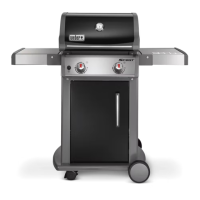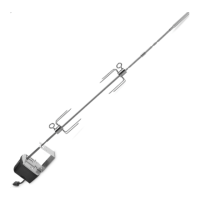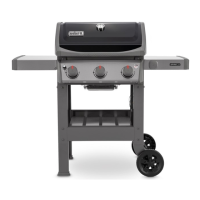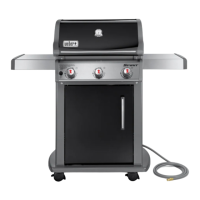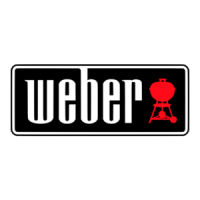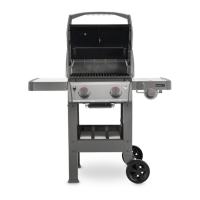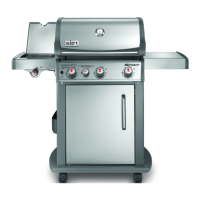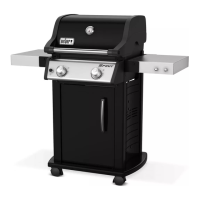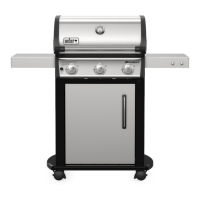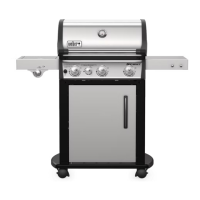GAS GRILL
LPG Gas Grill Owner’s Guide
#90817
YOU MUST READ THIS OWNERS GUIDE
BEFORE OPERATING YOUR GAS BARBECUE.
m DANGER
If you smell gas:
1. Shut off gas to the appliance.
2. Extinguish any open flames.
3. Open lid.
4. If odor continues, keep away from the
appliance and immediately call your gas
supplier or your fire department.
Leaking gas may cause a fire or explosion
which can cause serious bodily injury or
death, or damage to property.
m WARNING:
1. Do not store spare LPG cylinder within 10
feet (3m) of this appliance.
2. Do not store or use petrol or other
flammable liquids or vapors within
25 feet (8m) of this appliance.
m WARNING: Follow all leak-check
procedures carefully in this manual prior
to barbecue operation. Do this even if the
barbecue was dealer-assembled.
NOTICE TO INSTALLER: These instructions
must be left with the owner and the owner
should keep them for future use.
THIS GAS APPLIANCE IS DESIGNED FOR
OUTDOOR USE ONLY.
m WARNING: Do not try to light this
appliance without reading the Ignition
Instructions section of this manual.
Register your barbecue online at www.weber.com
®
210/310
90817 12/19/11 LP
AU - AUSTRALIAN
CLOSED CART CLASSIC
